The first time I visited SAKALA, in May 2010, I saw what looked like the remains of crumbled buildings amid the trash dumps along the road.
I remember nodding at the destruction and asking SAKALA’s leader, Daniel Tillias, “Earthquake?”
I was referring to the devastating earthquake that had struck Haiti a few months before in January 2010.
I thought I knew the answer, but I didn’t.
No, not the earthquake, Daniel said, Cité Soleil has been like this for 30 years.
When I went inside SAKALA that first time, it did not have buildings, just some tents along the soccer “field” (a repurposed old concrete floor of a long-gone destroyed factory).
I saw a couple of little kids playing soccer with a plastic soda bottle and it pained me. Such a shame these kids have to play with a piece of trash – and it was.
But then I kept watching.
The kids were really good players and had some fancy footwork going on. It was actually pretty cool what they were able to do with that plastic bottle.
And while I still thought it was a shame that they did not have a proper ball – and did not know yet that SAKALA teams did play with regulation soccer balls – I also thought the world would be a better and more joyous place if we could all be more like these two little boys and see a thing, even a piece of trash, and do something really cool with it.
This may have been my first unofficial introduction to FatraKa, although the name would not be coined by Daniel until almost a decade later.
Seeds are always growing at SAKALA – whether the seeds of the moringa “miracle” tree or the seeds of an idea.
“Fatra” is Haitian Creole for the word “trash” and “ka” is “can” (meaning able). Hence, “Trash Can.” So it is a play on words in both Haitian Creole and English.
The most visible sign of SAKALA’s FatraKa initiative is its art program where kids take recycled pallet wood and objects found in street trash dumps and make the coolest artwork – especially frames – from it.
Here’s one of SAKALA’s young artists, Berlande, at work. ( I love this picture because you can just see Berlande in the midst of the creative process. She does such beautiful work.)
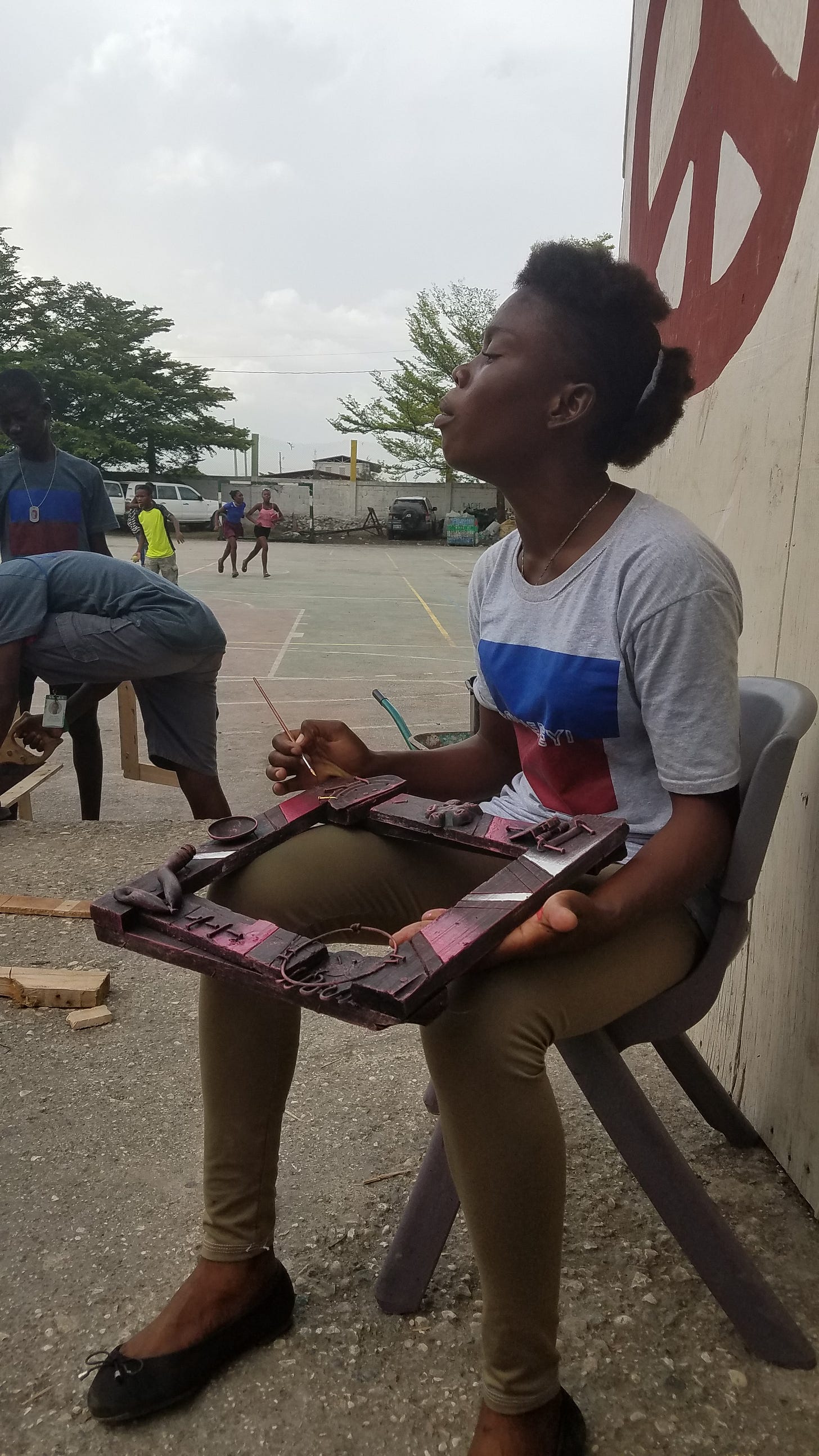
We have started selling the work in SAKALA’s gift shop to our wonderful visitors (we love visitors :)). We also sell them abroad with whatever I or other SAKALA visitors can bring back in suitcases.
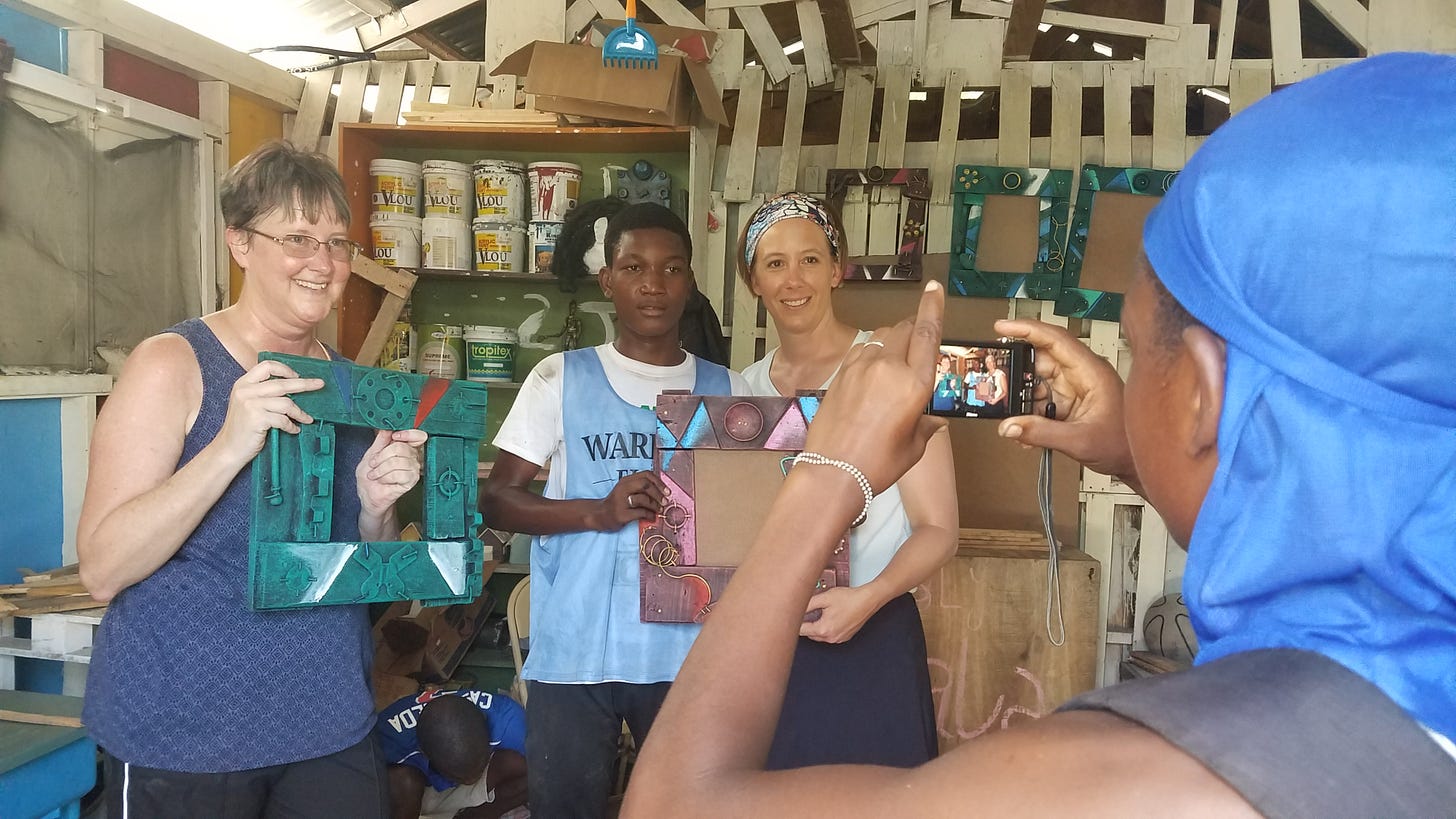
But our dream is to come up with a more reliable shipping plan than “Nancy’s Suitcase” and some day we hope to make these regularly available through online sales.
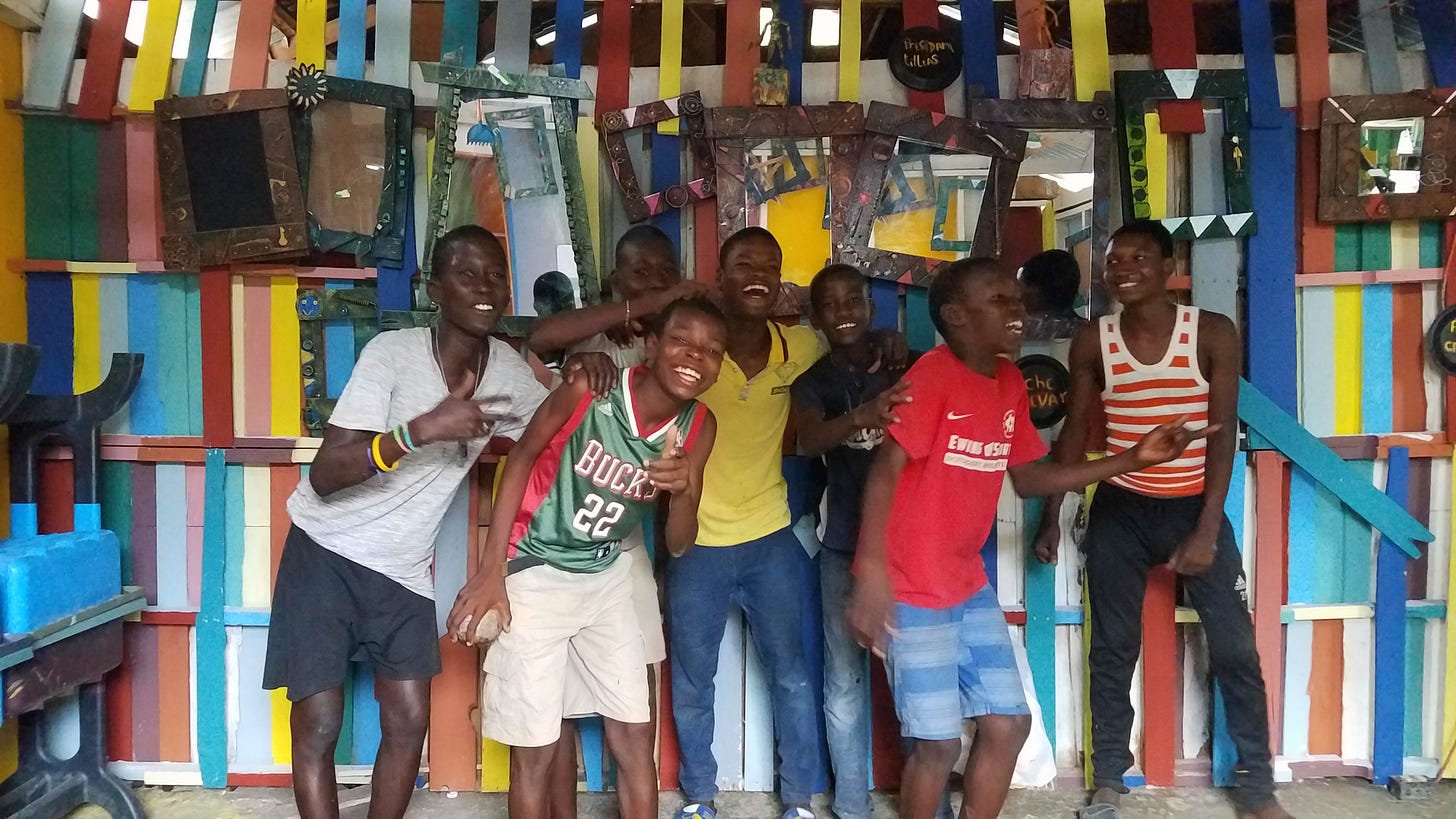
I just love the joy and pride SAKALA’s young artists take in their work and want to spread it all over the world. We need it now more than ever.
The FatraKa environmental art program started with a grant from the Living Waters Children’s Fund and has since become part of training program for at-risk youths that SAKALA created in partnership with the Haitian branch of the International Labor Organization.
Part of the mission is to find creative ways to deal with Haiti’s severe trash management problem.
As an example of that trash management problem, here is a picture of a “drainage” canal just over the wall from SAKALA.
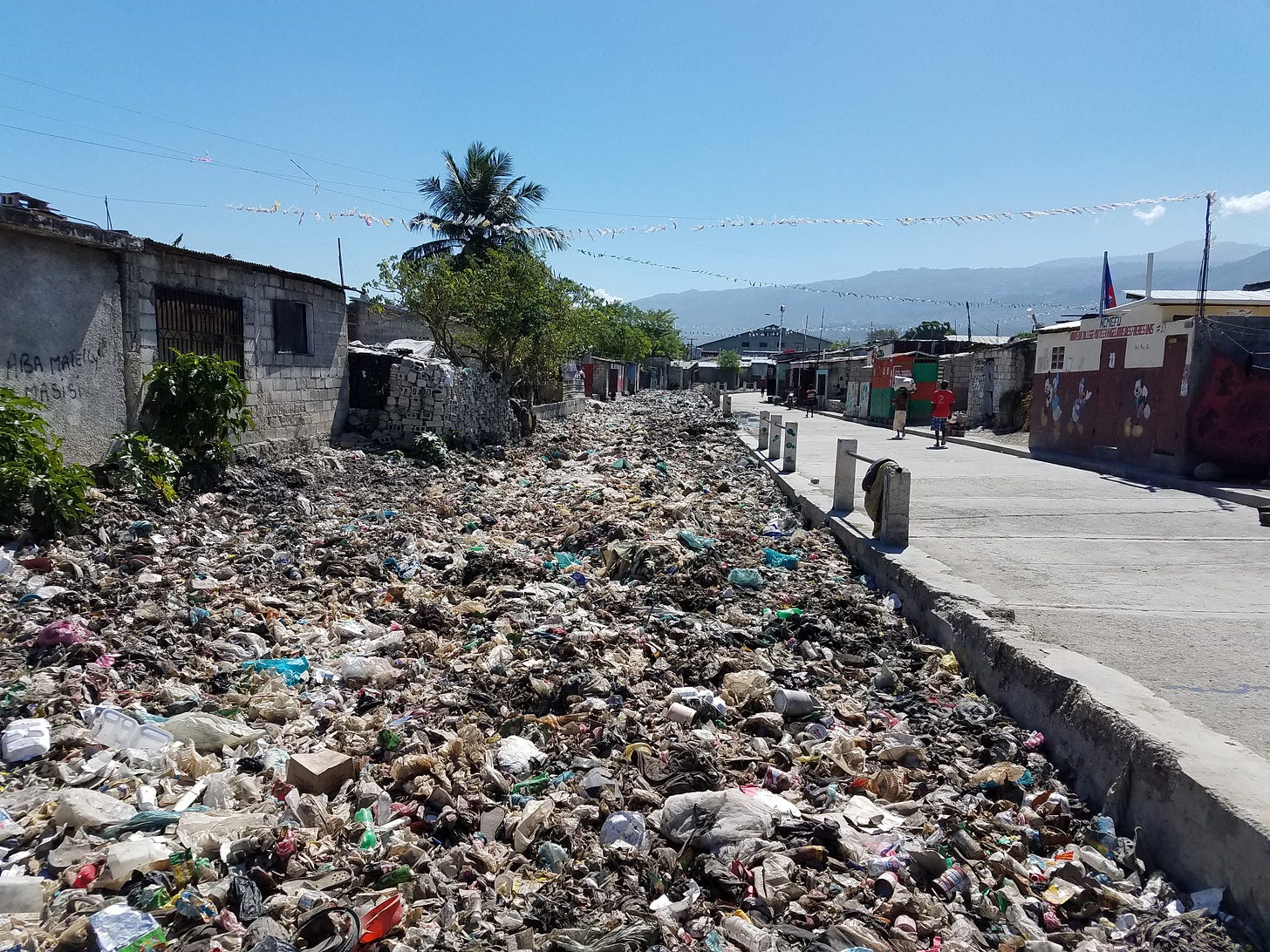
I say “drainage” in quotes, because obviously this canal is too stuffed with trash, many feet deep, to drain anything. Built to help mitigate flooding, it is actually a cause of flooding.
I saw this canal for the first time during that first trip to SAKALA back in 2010.
Even during that first trip, I could see SAKALA was a place clearly filled with love and creativity, but also heartbreaking challenges and injustices that seemed insurmountable.
So I was admiring but skeptical when Daniel at the end of that first tour took me to edge of the soccer field and pointed out a row small waste baskets.
Some were for trash and some were for recycling and Daniel was trying to teach people to use them and not just throw trash wherever.
I looked around at all the trash thrown wherever outside SAKALA and, as I said, was skeptical. But maybe, just maybe, they could pull off this modest dream.
Then Daniel, who in 2019 was named a CNN Hero, said he wanted to make the dump next door to SAKALA a big community garden someday.
This seemed so impossible to me that it made me a little sad, but I admired the dream.
In 2012, SAKALA became home to Haiti’s largest urban garden and it still is today.
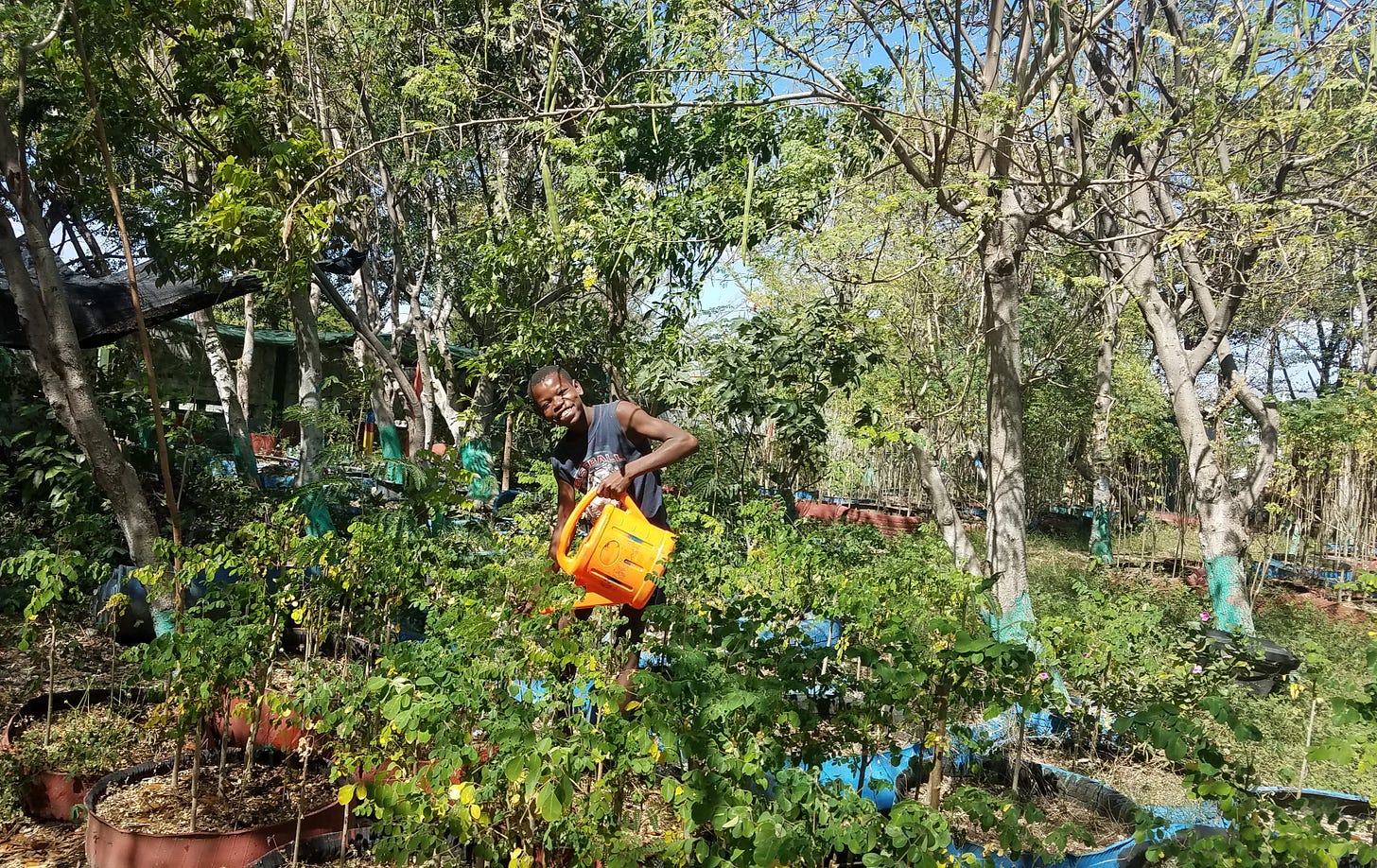
See what I mean about seeds?
Here are those waste baskets, another type of seed, Daniel showed me 10 years ago when I did not really know what I was looking at, but took a picture anyway.
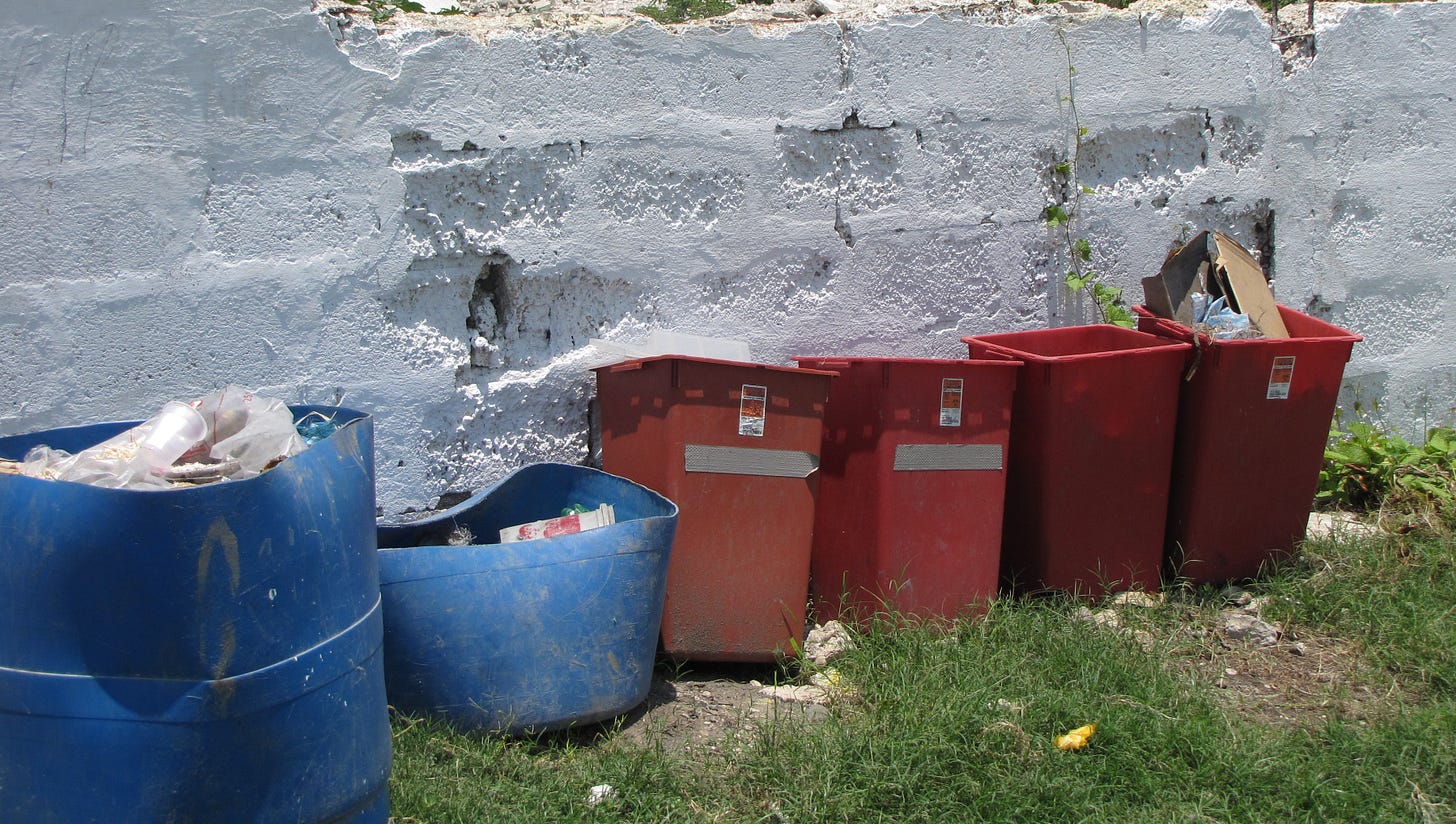
And here is a truck load of recyclables heading out of SAKALA’s gate last year.
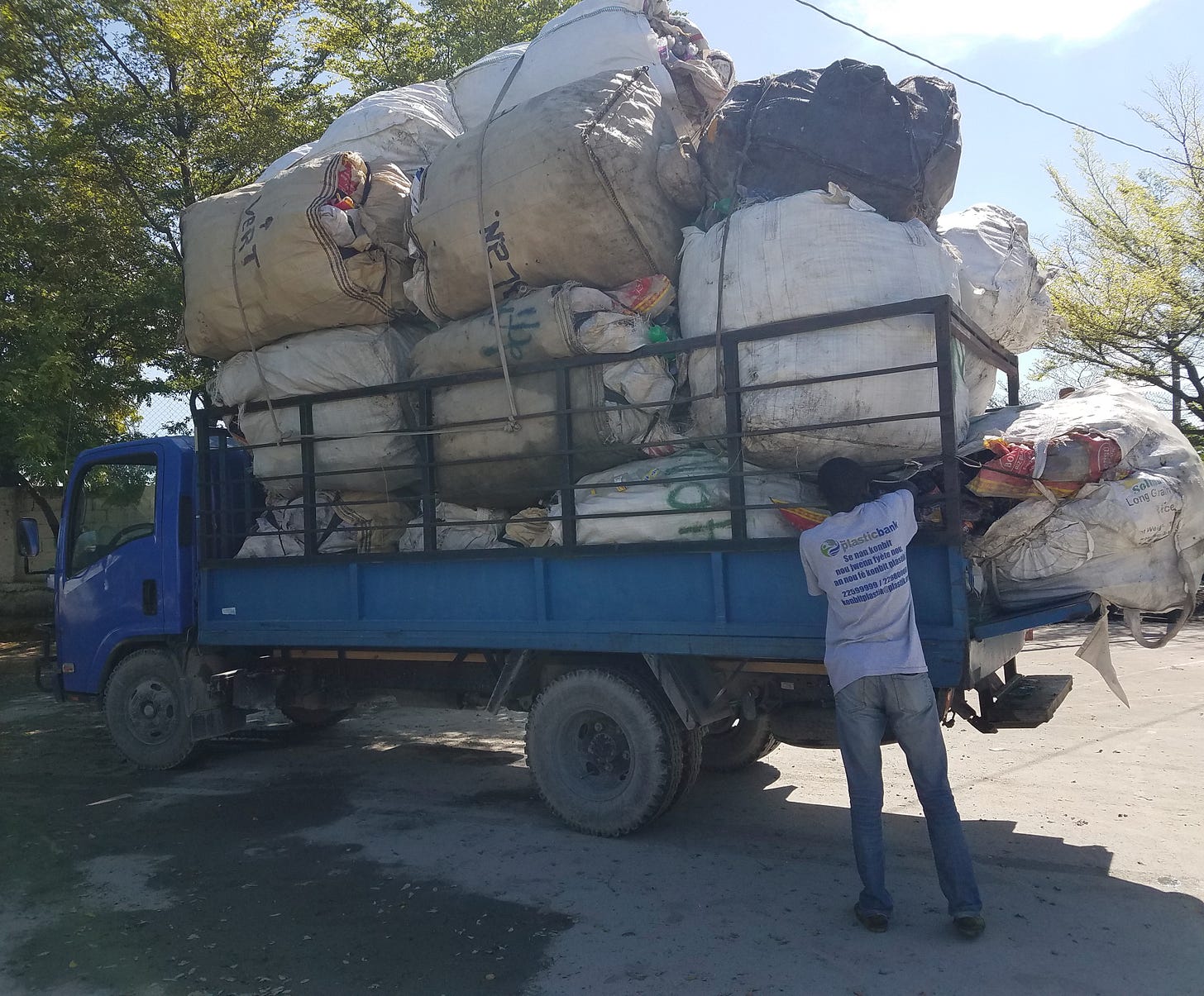
I’ve learned not to underestimate the power of a dream, especially when it is paired with opportunity and imagination.
There is an abundance of dreams and imagination at SAKALA, but not as much opportunity as I would hope, but we are working on that with programs like FatraKa.
If you would like to support them, you can donate through the SAKALA website and just put a note you want to support the FatraKa environmental art or recycling programs.
Whatever challenges you are facing, may you be blessed with the gift — that SAKALA has in abundance— of seeing things, even harsh things, in a new, more beautiful light.
Wishing you much peace, happiness, and health.
You can reach me at nancy.young@sakalainternational.org


